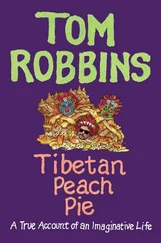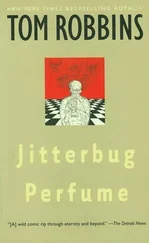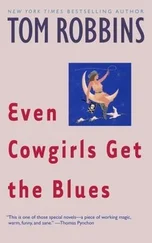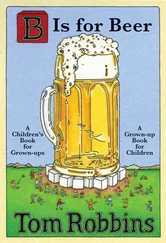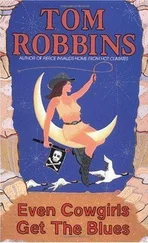Predictably, the journalists who’ve investigated Bhagwan have each and every one been befuddled by his methods, his messages, and the delightful paradoxes that they see only as flaky contradictions. Even many of Rajneesh’s followers end up being confused by him. Well, Jesus left numerous contemporaries, including fellow Jewish reformers and his own disciples, in a comparable state. It goes with the territory, which is why they say in Zen, “The master is always killed on the road.” Frequently he’s killed by those who profess to love him most.
When Rajneeshis misbehave, the media and the public blame Rajneesh. They can’t understand that he doesn’t control them, has, in fact, no intention of ever trying to control them. The very notion of hierarchical control is antithetical to his teachings.
When Bhagwan learns of vile and stupid things done in his name, he only shakes his head and says, “I know they’re crazy, but they have to go through it.” That degree of freedom, that depth of tolerance, is as incomprehensible to the liberal hipster as it is to the rigid square. And yet, as an outsider who’s been moved, impressed, and entertained by the manner in which Bhagwan has put the fun back in profundity, I know it’s a level of wisdom that we simply must attain if we’re to climb out of the insufferable mess we most aggressive of primates, with our hunger for order and our thirst for power, have made of this splendid world.
Introduction to Bhagwan: The Most Godless Yet the Most Godly of Men, by Dr. George Meredith, 1987
NOTE:When Bhagwan was shown the preceding remarks, he laughed and said that he didn’t believe in Oriental guru systems either. In fact, he disavowed any connection to guruhood, saying that the very notion of a guru-disciple relationship is an affront to human dignity. He explained that since his emphasis had always been on just being oneself, the act of refusing to be anybody’s disciple is precisely what being a disciple of Bhagwan is all about. Bingo! I believe he was speaking truthfully and I love him for it. In complaining that others have misrepresented Bhagwan, I misrepresented him myself, and for that I apologize.
Incidentally, as the reader probably is aware, not long before Bhagwan was poisoned by government assassins, he changed his name to Osho. At the Poona ashram, the name change was embraced so thoroughly, so fervently, one would have thought “Bhagwan” had never existed. It was almost reminiscent of one of those old Soviet appellation purges. However, I believe that had he lived, he would have eventually changed his name again, the whole point being, in my opinion, to demonstrate the ultimate fallacy of identifying with and becoming attached to one’s name; or, for that matter, any other self-defining labels, including occupational titles and ethno-geographic distinctions. Who knows, had he survived, Bhagwan/Osho might have become Wolfgang, Bubba, or World B. Free.
When you learn that her name is Ruby Montana, you figure right away she’s a cowgirl. An urban cowgirl. Which is to say, a make-believe cowgirl. Real cowgirls, working cowgirls, have less romantic names, such as Pat Futters or Debbie Jean Strunk. Still, Ruby is so appropriately booted, vested, and bandannaed that you wonder if she mightn’t at least be a weekend rodeo queen. Ah, but then, far from the lone prairie, she drives up in a lurid two-tone 1955 Oldsmobile, removes a French horn from its trunk, and enters her house — a pink house, a house the color of the sorest saddle sore Dale Evans ever sat upon — and you conclude that she must be something else.
Something else, indeed.
In actuality, Ruby Montana is a popular Seattle shopkeeper. She is also that city’s sweetheart of fantasy. For Ruby’s imagination isn’t simply tied to the hitching post of the make-believe cowgirl; her whole existence is an exercise in make-believe. In the world she has made for herself — a world built of neoteny, nuttiness, nostalgia, and kitsch; a world in which the secret life of objects is not only recognized but allowed to interface dramatically with her own life — Ruby daily demonstrates that reality is a matter of perception and that dreams don’t come true, dreams are true.
Her shop, Ruby Montana’s Pinto Pony, sells collectibles, and she herself is a collector. Should you follow her into that pink bungalow (its façade a hue similar to the Pepto-Bismol a nervous Daisy Lou chugs before the big barrel race), you would be amazed by both the extent of her collections and the artistry with which they are displayed. Every room is teeming: cookie jars, candlesticks, lamps (lava, figurative, and magic spinning), wall fish, ice buckets, ashtrays, bookends, German mythological prints, ranch furniture, Pee-wee Hermanesque gewgaws, Hollywood dime store Wild West memorabilia, and — in the Flamingo Room, the den where Ruby hopes to be sitting “when they drop the bomb”—a bar in the shape of a late 40’s speedboat, aloha pillows, South Sea coffee tables, a shrine to Elvis, and twinkling tiki party lights. Inexplicably, all this sub-lowbrow ornamentation is arranged in a manner that approximates good, if freewheeling, taste. Roll partially over, Beethoven.
And we haven’t even mentioned the salt and pepper shakers. Not that they could be overlooked, God no! There are hundreds of salt and peppers. Hundreds. Most of them unusual, many of them rare. They dominate the house. In some ways they dominate the owner of the house. They hold her much as a director is held by the various competing egos in his troupe. You see, Ruby Montana interacts with her treasures. She’s involved with them. Dissatisfied with mere ownership, she doesn’t accumulate knickknacks (“I despise that word!”) to impress others or decorate a space. Ruby selects her salt and peppers carefully, and those that pass audition she plays with. She makes up tales about them. She casts them in private productions staged on Formica tabletops and kitchen shelves.
For example, there is the gay donkey (maybe salt, maybe pepper) whose parents can’t handle his proclivities. Today, the donkey is dancing with his lover while Mom and Dad look on in bewilderment. There ensues poignant dialogue in which the hee-haw homosexual explains he’s leaving town. So is the pig family next door, though the pigs, more happily, are off to Florida to attend a space launch: the dinnerware rocket is poised on its pad, presided over by JFK, who looks dignified and healthy despite high levels of sodium. We’re talking salt and pepper dramatics here. Condiment-dispensing theater.
Born and largely reared in cowgirly Oklahoma (Montana makes a prettier surname, you’ve got to admit), Ruby (her birth name remains a secret) loved visiting her grandmother in Stillwater, who collected souvenir pitchers that she would eulogize for the grandchildren. “The pitchers all had stories,” says Ruby. “I decided when I grew up, I wanted a house full of stories, too.”
In 1974, having earned a music degree in classical French horn from the University of Michigan—“nobody offered me a scholarship to ride horses”—she moved to Seattle after drawing its name out of a hat. Presumably ten-gallon. She abandoned plans to study for a Ph.D. (Dr. Montana?) because Seattle was “too damn pretty,” and took a job teaching school. By then she’d begun to collect tramp and folk art, some pieces of which became so valuable she felt obliged to sell them off. It wasn’t long before she’d lassoed a house, painted it the tint of a stablegirl’s first hickey, and was filling it with narratives of her own invention. “I’m in touch with everything in my house,” she confides. “The furnishings are connected to my fantasy life and to my heart. They are my joy, my friends.” And not just the nostalgic items. “We live in an age when most things feel like dental tools, although I do like modern objects if they have character.”
Читать дальше

